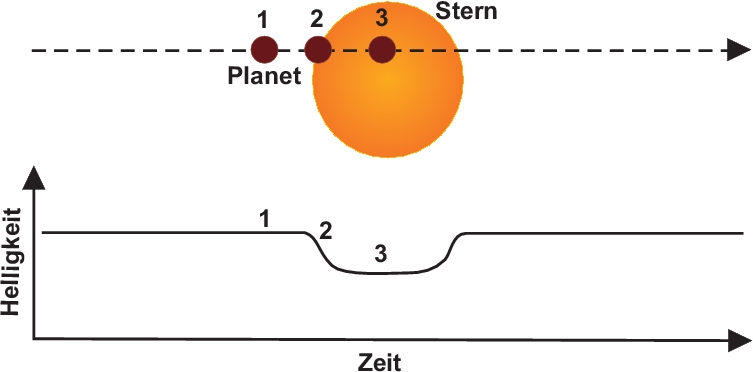Photometric Detection of extrasolar Planets by the Transit Method
The aim of the transit method is to measure the brightness drop of a star, which results from the transit of a planet across the star´s disk.

The main advantage of the transit method is that the size of the planet can be determined from the lightcurve. When combined with the radial velocity method one can determine the density of the planet, and hence learn something about the planet's physical structure.
The exact shape of the transit depends on the size ratio of planet and central star, the inclination and the stars limb darkening.
Transits are observable if the inclination is very close to 90°. The minimal inclination is lower for planets close to the central star than for planets farther away. Therefore the transit method is especially well suited to find close-in companions.
The transit event is - in a first approximation - a periodic phenomenon. In a system where a known planet transits its host star, a second planet in that system can cause the time between transits to vary. This technique is itself a planet detection method that is very powerful for searching low-mass planets and is most sensitive for planets in mean-motion resonances. For example, for a hot jupiter (3-day orbit), an Earth mass planet in the 2:1 resonance will cause periodic transit timing variations (TTV) that have an amplitude greater than one minute. It can also be used to detect possible trojans of transiting extrasolar planets or „exomoons“.
The transit method is becoming increasingly popular, because even with small telescopes one can achieve great successes. Small ground-based observatories have already exceeded the photometric precision necessary to detect sub-Earth mass planets by the transit timing variation method.
